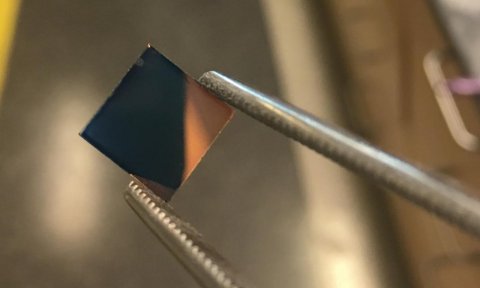
Chemists and engineers collaborate on process that washes away nonconductive side chains from a robust polymer backbone to create a powerful conductive plastic.
It was a simple idea — maybe even too simple to work.
Research scientist James Ponder and a team of Georgia Tech chemists and engineers thought they could design a transparent polymer film that would conduct electricity as effectively as other commonly used materials, while also being flexible and easy to use at an industrial scale.
They’d do it by simply removing the nonconductive material from their conductive element. Sounds logical, right?
The resulting process could yield new kinds of flexible, transparent electronic devices — things like wearable biosensors, organic photovoltaic cells, and virtual or augmented reality displays and glasses.